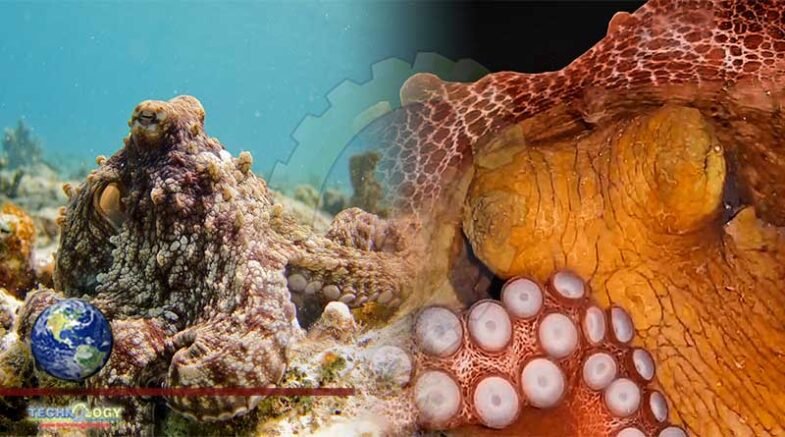Because humans and octopuses are separated by more than 500 million years of evolution and both have a two-stage sleep pattern.

Do octopuses dream? Scientists haven’t cracked that mystery, but they have come a bit closer. A new study reveals that, like us, our eight-legged friends experience both an active and a quiet sleep stage. Because humans and octopuses are separated by more than 500 million years of evolution, the discovery suggests a two-stage sleep pattern evolved independently twice.
“We haven’t shared an ancestor with an octopus since we were just single cells in the ocean,” says Marcos Frank, a neuroscientist at Washington State University who was not involved with the research. “It’s incredible, if this holds up.”
To make the discovery, researchers filmed four octopuses of the species Octopus insularis, found off the coast of Brazil, while they slept in tanks in the lab. They checked whether the animals were awake or asleep by showing videos of live crabs on a screen facing their tank or gently hitting the tank wall with a rubber hammer to see whether they stirred. During their “quiet” sleep, the octopuses’ skin was pale and their pupils narrowed to a slit; they were mostly still, and their suckers and arm tips sometimes moved gently and slowly. But during “active sleep,” their skin turned darker and stiffened; they moved their eyes and muscular twitches contracted their suckers and body (see video above).
The active sleep, which typically lasted about 40 seconds, usually occurred after a long quiet sleep, and the cycle repeated every 30 to 40 minutes, the researchers report today in iScience.
These two states are akin to the two major stages in mammalian sleep: rapid eye movement (REM) sleep, in which the eyes move quickly and dreams happen, and “slow-wave” sleep, in which electrical activity synchronizes across the brain. This alternating cycle, also present in birds and possibly in reptiles, is thought to be important for consolidating memories and clearing waste from the brain.
Still, the researchers are cautious about drawing too many similarities. Octopuses and mammals have very different brain architecture, notes team member Sidarta Ribeiro, a sleep neuroscientist at the Brain Institute of the Federal University of Rio Grande do Norte (UFRN).
“I doubt very much that what’s going on in the brain in the states is exactly the same [as what happens in mammals],” adds Jennifer Mather, an animal behaviorist at the University of Lethbridge who was not involved with the work. “But the fact that there are different states is very interesting.”
In humans, dreaming usually happens during REM sleep, but “we cannot ask the octopus if they are really dreaming,” says team member Sylvia Lima de Souza Medeiros, a neuroscience graduate student at UFRN. But she hypothesizes that her team could test this in the lab by comparing skin color changes while the octopus is awake and learning a new challenge, and while it is sleeping. “Maybe what they show in the skin can be related to what they are dreaming about,” she says.
Even if we can’t know if the eight-legged animals are dreaming, “it’s hard not to imagine that they’re experiencing something,” Frank says. Octopuses are known for solving very tough challenges like removing the lid from a jar or camouflaging to blend in with their environment, he notes. Testing how sleep (or a lack of it) impacts learning these abilities might offer insight into the role of sleep in consolidating memories in these creatures.
To truly figure out what is going on in these animals’ brains, Mather says, researchers would need to measure their brain activity with electrodes—something that would be tricky to do with these underwater animals that eagerly manipulate anything stuck to their bodies with their powerful tentacles. But “nobody ever accused octopuses of being easy to study,” she says.
Originally published at Science Magazine
